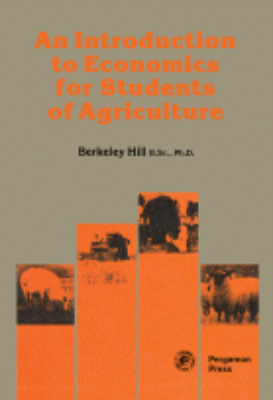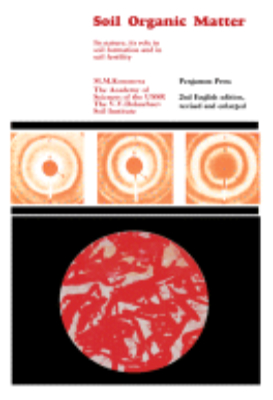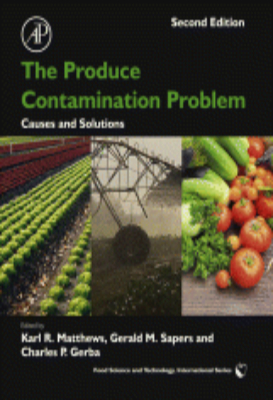Small Animal Dermatology Secrets
This full-colour dermatology text provides essential, practical information for solving dermatological problems commonly encountered in small animals. Organised by disorder type, the popular question-and-answer format and detailed index make it easy to find vital information. In more than 50 chapters, the expert contributors propose key questions and provide authoritative answers about the diagnosis and treatment of dermatologic conditions relevant to small animal veterinary practice.
| Publication Language |
English |
|---|---|
| Publication Access Type |
Premium |
| Publication Author |
* |
| Publisher |
Elsevier |
| Publication Year |
* |
| Publication Type |
ebooks |
| ISBN/ISSN |
* |
| Publication Category |
Animal Science |
Kindly Login to ICAR Digital Library Portal.
Related products
A History of Weed Science in the United States
"It is important that scientists think about and know their history - where they came from, what they have accomplished, and how these may affect the future. Weed scientists, similar to scientists in many technological disciplines, have not sought historical reflection. The technological world asks for results and for progress. Achievement is important not, in general, the road that leads to achievement. What was new yesterday is routine today, and what is described as revolutionary today may be considered antiquated tomorrow. Weed science has been strongly influenced by technology developed by supporting industries, subsequently employed in research and, ultimately, used by farmers and crop growers. The science has focused on results and progress. Scientists have been--and the majority remain--problem solvers whose solutions have evolved as rapidly as have the new weed problems needing solutions. In a more formal sense, weed scientists have been adherents of the instrumental ideology of modern science. That is an analysis of their work, and their orientation reveals the strong emphasis on practical, useful knowledge; on know how. The opposite, and frequently complementary orientation, that has been missing from weed science is an emphasis on contemplative knowledge; that is, knowing why. This book expands on and analyzes how these orientations have affected weed sciences development. Key Features. The first analytical history of weed science to be written. Compares the development of weed science, entomology and plant pathology. Identifies the primary founders of weed science and describes their role"
Agricultural Statistics
Agricultural Statistics: A Handbook for Developing Countries presents the development of agricultural statistics in various countries of Africa and Asia. This book provides a guideline to those in charge of agricultural statistics in developing countries to know their priorities and to have clear objectives. Organized into 14 chapters, this book begins with an overview of the importance of regular collection of agricultural statistics to the functioning of the community as well as for its agriculture and agricultural development. This text then examines the improvement of methods of collection of existing statistics for greater dependability. Other chapters consider the yield rates and areas of crop production. This book discusses as well the direct estimation of production, which consists of large estates with their processing plants meant for processing their products only. The final chapter deals with the various organizational set-ups for the compilation of agricultural statistics. This book is a valuable resource for agriculturists and statisticians.
An Introduction to Economics for Students of Agriculture
The Introduction to Economics for Students of Agriculture describes the universal economic principles, illustrated primarily by examples drawn from farming and the food industry. This book is composed of nine chapters, and begins with what an overview of the concepts of economics, its objective, with a particular emphasis on the mechanism of allocating scarce resources. The succeeding chapters deal with the behavior of individual through the theory of consumer choice, the concept of demand and supply, market competitions, and production economics. These topics are followed by discussions on the mobility of the factors of production and unemployment, and some problems of using the market as a resource allocator. This book will prove useful to economists, agriculturists, and students.
Herbivorous Insects
Herbivorous Insects: Host-Seeking Behavior and Mechanisms addresses mechanisms of searching behavior leading ultimately to host location of herbivorous insects. It is divided into four sections, wherein the first two sections deal with neurophysiology and the diversity of behavioral induction cues. The third section covers the searching mechanisms as affected by insects' breadth of diet. The last part examines the evolutionary analysis of the behavioral and physiological adaptations in insect/host plant relations. This book starts with an introduction to the chemical sensory system as it relates to host selection in general. This is followed by considerable discussions on host-seeking behavior and allied patterns in behavior. This text also includes the study of oviposition behavior in butterflies belonging to Papilionidae. The third section presents host selection and colonization by three insects within the saprophage-predator continuum, namely, Hylurgopinus rufipes, Scolytus multistriatus, and Pissodes strobi. The behaviors by which certain oligophagous insects locate and select food plants are also considered. The concluding part addresses the unifying theme and the diversity of responses of phytophagous insects to plants. The book provides direction toward developing a unifying theme and improving the ability to unravel the complexities of insect/plant interactions. Behaviorists, ecologists, entomologists, evolutionary biologists, and physiologists will find this book invaluable.
Insect Pests of Potato
"Insect Pests of Potato: Biology and Management provides a comprehensive source of up-to-date scientific information on the biology and management of insects attacking potato crops, with an international and expert cast of contributors providing its contents. This book presents a complete review of the scientific literature from the considerable research effort over the last 15 years, providing the necessary background information to the subject of studying the biology management of insect pests of potatoes, assessment of recent scientific advances, and a list of further readings. This comprehensive review will be of great benefit to a variety of scientists involved in potato research and production, as well as to those facing similar issues in other crop systems. Key Features. Written by top experts in the field, this is the only publication covering the biology, ecology and management of all major potato pests. Emphasizes ecological and evolutionary approaches to pest management. Summarizes information from hard-to-get publications in China, India, and Russia"
Soil Organic Matter: Second Edition 1966
Soil Organic Matter: Its Nature, Its Role in Soil Formation and in Soil Fertility focuses on the contributions of soil organic matter in soil formation and fertility, including weathering, decomposition, and synthesis of humus substances. The publication first elaborates on the main stages in the history of soil humus study and ideas on the composition of soil organic matter and nature of humus substances. Discussions focus on organic substances of individual nature, strictly humus substances in soil organic matter, and humus substances as a complex of high molecular- weight compounds. The text then examines the biochemistry of humus formation, including the role of physical, chemical, and biological factors, origin of humus substances, possible participation of lignin in the formation of humus substances, and the role of oxidizing enzymes in the synthesis of humus substances. The manuscript takes a look at the importance of organic matter in soil formation and soil fertility and the natural factors of humus formation. Topics include the role of organic matter in the weathering and decomposition of soil minerals; role of organic matter in the formation of soil structure; effect of organic matter on the growth and development of plants; and influence of chemical and physicochemical soil properties on humus formation. The publication is a dependable source material for readers interested in the influence of soil organic matter in soil formation and fertility.
The Agronomy and Economy of Important Tree Crops of the Developing World
"Major tree crops contribute substantially to the economy of many developing countries on the Asian, African and Latin American continents. For example, coffee is the main revenue earner for Kenya. This book provides a comprehensive review of the agronomy, botany, taxonomy, genetics, chemistry, economics, and future global prospects of a range of crops that have great food, industrial and economic value such as cocoa, coffee, cashew, oil palm and natural rubber. Key Features. Discusses the major tree crops of great economic value to the developing world. The author is an eminent scientist who has won numerous awards for his work in this area"
The Produce Contamination Problem: 2009
Understanding the causes and contributing factors leading to outbreaks of food-borne illness associated with contamination of fresh produce continues to be a worldwide challenge for everyone from the growers of fresh-cut produce through the entire production and delivery process. Additionally researchers both at universities and in government agencies are facing an increased challenge to develop means of preventing these foodborne illness occurrences. The premise of this book is that when human pathogen contamination of fresh produce occurs, it is extremely difficult to reduce pathogen levels sufficiently to assure microbiological safety with the currently available technologies. A wiser strategy would be to avoid crop production conditions that result in microbial contamination to start. These critical, problem-oriented chapters have been written by researchers active in the areas of food safety and microbial contamination during production, harvesting, packing and fresh-cut processing of horticultural crops, and were designed to provide methods of contamination avoidance. Coverage includes policy and practices in the US, Mexico and Central America, Europe, and Japan.
The Produce Contamination Problem: 2014
"Understanding the causes and contributing factors leading to outbreaks of food-borne illness associated with contamination of fresh produce is a worldwide challenge for everyone from the growers of fresh-cut produce through the entire production and delivery process. The premise of The Produce Contamination Problem is that when human pathogen contamination of fresh produce occurs, it is extremely difficult to reduce pathogen levels sufficiently to assure microbiological safety with the currently available technologies. A wiser strategy would be to avoid crop production conditions that result in microbial contamination to start. These critical, problem-oriented chapters have been written by researchers active in the areas of food safety and microbial contamination during production, harvesting, packing and fresh-cut processing of horticultural crops, and were designed to provide methods of contamination avoidance. Coverage includes policy and practices in the United States, Mexico and Central America, Europe, and Japan. Key Features. Addresses food-borne contaminations from a prevention view, providing proactive solutions to the problems. Covers core sources of contamination and methods for identifying those sources. Includes best practice and regulatory information"
Tomato Diseases
"Following the successful first edition, this revised edition, contains 680 pages and 900 color photos and diagrams, covering every imaginable symptom, pest and disease affecting the tomato. This is the definitive work on the diseases and disorders of the tomato, a worldwide crop of significant economic importance. Key Features. Includes over 300 high quality colour photographs. Explains how to examine and identify diseases of the foliage, roots, neck, stalk and fruit. Enables readers to diagnose and combat both parasitic and non-parasitic diseases of the tomato plant and fruit"











